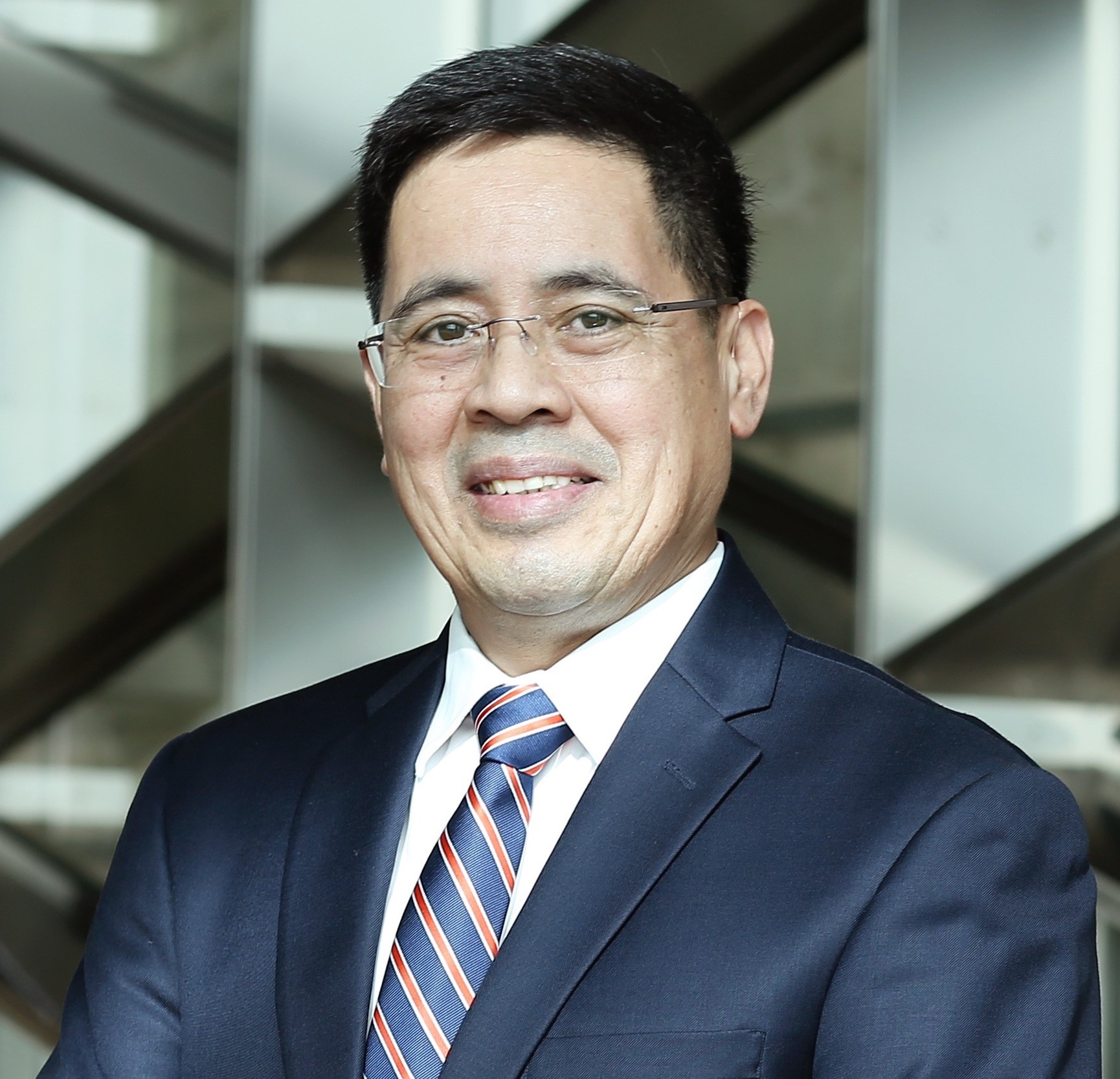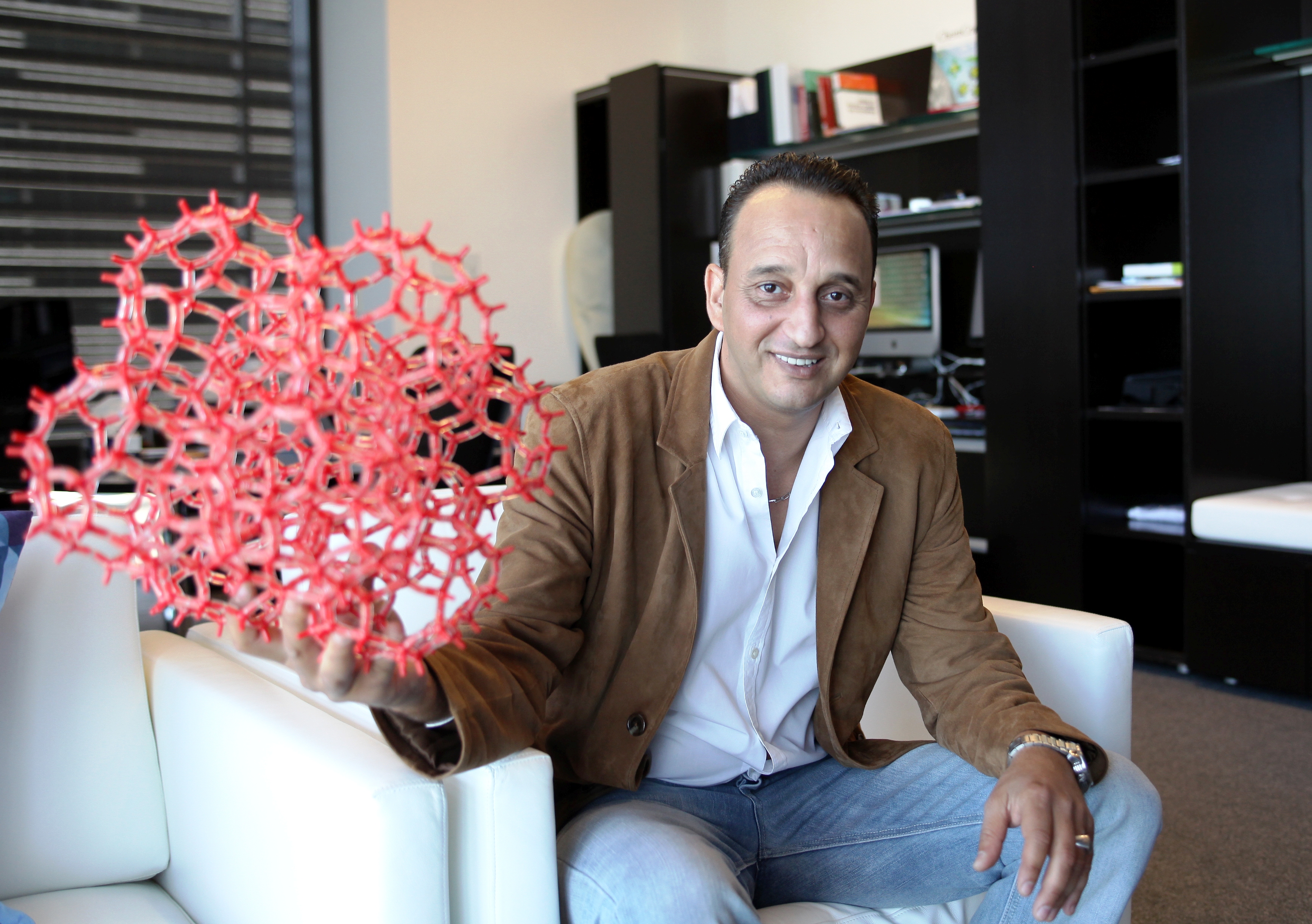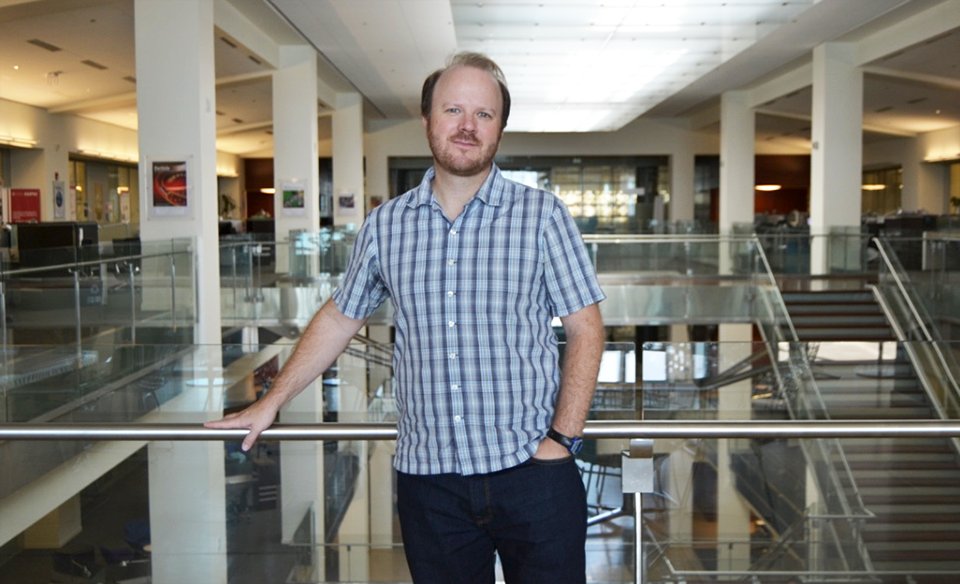Science: The language of modern life

Associate Professor of Materials Science and Engineering, Chemistry, and Chemical Engineering at Penn State University Michael Hickner recently visited KAUST as part of the CRDF-KAUST-OSR Visiting Scholar Fellowship Program. Photos by Meres J. Weche.
In the 17th century when colonists arrived in North America, they brought with them a need for iron and iron ore to supplement building and infrastructure needs; to create cooking implements; and to craft tools and weapons, among other uses. In 1783, when the American Revolution ended, to facilitate the burgeoning iron needs of the fledgling nation, 83 new ironworks were established in the state of Pennsylvania alone, with 30 percent of the new growth concentrated in the center of the “Keystone State.”
In the spring of 1792, two former Colonels of the American army, John Patton and Samuel Miles, co-founded and operated the first charcoal iron furnace in the state, the Centre Furnace, at State College, Centre County. Sixty-three years later, the then Centre Furnace co-owner James Irvin gave 200 acres of adjacent land as the site for what would eventually become the Pennsylvania State University (Penn State).
Since its founding in 1855 as the Farmers' High School of Pennsylvania, the degree-granting institution has been considered both nationally and internationally as a leader in education. The university—with 24 statewide campuses—espouses teaching, research and public service, along with forging collaborative ties with educational and industrial partners to create, disseminate, integrate and apply valuable knowledge to the global research community and society as a whole.
Over a number of months in 2017, one researcher from Penn State chose to leave behind the long-standing academic history and lush surrounds of the University Park campus to join up with his international peers at KAUST who are working in the Gas Permeation and Sorption Laboratory in the University's Advanced Membranes & Porous Materials Research Center (AMPMC). The researcher, Professor Michael Hickner, associate professor of materials science and engineering at Penn State, has been collaborating with the AMPMC to develop new strategies for gas separation membranes.
Research interests and a love of chemistry
Before joining Penn State as an assistant professor in 2007, Hickner was a postdoctoral fellow and then a staff member at Sandia National Laboratories. He is also the associate director of the Penn State Materials Research Institute and is also currently the co-director of Center for Innovative Materials Processing through Direct Digital Deposition (CIMP-3D). Hickner's research and teaching interests include all aspects of polymeric materials and composites, polymer micro- and nano-structure, transport characterization, spectroscopy, electrochemistry and new materials for green energy and clean water applications. In graduate school, Hickner worked under the direction of the renowned polymer scientist James E. McGrath and spent time at Los Alamos National Laboratory.
His research group at Penn State, the Hickner Group, probes the connection between the molecular identity, nanophase structure and the resulting transport properties in polymeric materials. The group is a chemistry and polymer research group that synthesizes polymers mostly for ion transport applications. The group also works on battery, fuel cell and water treatment membranes.
Associate Professor of Materials Science and Engineering, Chemistry, and Chemical Engineering at Penn State University Michael Hickner recently visited KAUST as part of the CRDF-KAUST-OSR Visiting Scholar Fellowship Program. Photos by Meres J. Weche.
Hickner also remembers a time when, like his current students, he was learning his craft. In particular, he holds a certain fondness and respect for his high school chemistry teacher Terry Allis from the small town of Escanaba, Michigan, U.S., who encouraged him to seize on and develop his early love for all things chemistry-related.
“My chemistry class in high school is what started me on this journey. I had a great chemistry teacher and I just really loved chemistry, but I had always been a tinkerer, whether it was working on bicycles or radios or whatever. I don't come from a science family, but my grandpa was an engineer, so that flavor was there somewhere. Figuring things out—like atoms and molecules—is just fascinating,” Hickner said.
First impressions
Hickner, who first visited KAUST and the Kingdom in the spring of 2011, was immediately impressed with the University and the high standard of the faculty, facilities, infrastructure and resources at hand.
“I’ve known the folks in the Water Desalination and Reuse Center for a long time and I first visited them in 2011. I knew about KAUST previously and I also knew Professor Ingo Pinnau from his work and and contributions to gas separation literature. He’s a big figure in the membrane community,” Hickner said.
“I think that the University’s focus on research is really what attracted me to come and work here," he emphasized. "Sometimes, especially at U.S. universities, there is so much going on. There are undergraduates. There are classes. Sometimes, the focus isn't always on research. But here, it's basically all focused on the research—research here is definitely number one,”
“KAUST has capabilities that we just don't have. For me, there are only a couple labs in the world like the AMPM Center,” he added.
‘The perfect match’
In April of 2016, the independent U.S. non-profit organization CRDF Global began taking applications for a KAUST Visiting Scholar Fellowship Program administered by the KAUST Office of Sponsored Research (OSR). The aim of the collaboration between CRDF Global and KAUST is to facilitate collaborative research projects between Saudi and U.S. researchers and encourage academic exchange between the Saudi Arabian and U.S. science community. The 2016 Visiting Scholar Fellowships, of which four were awarded in total, provided resources for U.S. researchers to travel to the Kingdom and conduct collaborative research at KAUST.
CRDF Global, which was founded in 1995, is an organization that promotes international scientific and technical collaboration through grants, technical resources, training and services. It also funds projects with the goal of advancing civilian-oriented science and entrepreneurship around the globe. The company has developed a multi-stage research grant selection process that emphasizes fairness, transparency and efficiency for scientists and counterparts throughout the world.
KAUST and CRDF have a history of collaboration that dates back to the founding of the University. Some members of the CRDF leadership team visited KAUST over two years ago, and from that visit and the many subsequent discussions following on from it, the nucleus of the Visiting Scholar Program was developed and implemented.
“OSR collaborated with CRDF in creating and promoting the Visiting Scholar Program and in endorsing those candidates rated highly by CRDF to the KAUST hosts,” said Teofilo Abrajano, KAUST OSR director. “Professor Hickner is a world-renowned scholar with some prior collaborations with the KAUST AMPMC, and selecting him for this program gave him and AMPMC the opportunity to rekindle their mutually beneficial collaboration,” he added.

Hickner was one of the four U.S. researchers awarded with a four-month fellowship at the University. Hickner completed his initial two month stint in spring and saw out his final two months this October. As a longtime proposal reviewer for CRDF, he saw this collaboration between both parties as the perfect opportunity to return to the University.
“I've been a proposal reviewer for CRDF for a long time. CRDF review proposals for a bunch of different countries and foreign scientists. Year after year, I was reviewing proposals and then when they announced the KAUST Visiting Fellowships, I saw that announcement, and since I knew CRDF and I knew KAUST, it was a perfect combination. I applied. I wrote a proposal. I asked Ingo if I could come to his lab, and then it all came together,” he said.
“In my time at KAUST, I have studied with Ingo on gas separation membranes, and particularly CO2 separations, which we can customize our polymers to address specific gases. At Penn State, we’ve made new polymers that have potential affinity for polar molecules—so attacking problems in gas separation is a good path for us. I've really tried to focus on completing my fellowship with Ingo and bring something back to Penn State that's tangible and a basis for future collaborations and exchanges,” Hickner noted.
Fostering future collaborations
While on campus, Hickner worked at the gas separation laboratory located in the AMPMC and focused on learning how gas separation membranes are characterized. More specifically, he worked on what the philosophy is to build and optimize one of these membranes. He also learned the methods, techniques and the workflow behind how these polymers are designed and improved.
Associate Professor of Materials Science and Engineering, Chemistry, and Chemical Engineering at Penn State University Michael Hickner recently visited KAUST as part of the CRDF-KAUST-OSR Visiting Scholar Fellowship Program. Photos by Meres J. Weche.
“Once I know that part (learning how gas separation membranes are characterized), then I can go back and look at the chemistry that we do at Penn State and try and figure out how to modify that to fit in this framework,” Hickner said.
“I’m studying how to characterize gas separation membranes, what type of separations we can achieve and ultimately we’d like to lower the cost of gas separation in petroleum refining, in natural gas recovery and also in energy applications, like using methane for new types of chemicals and also new types of fuels. KAUST has some of the best gas separation testing labs in the world and I wanted to get exposure to that environment—I worked with all of Ingo's students and it was fun learning from them in the lab,” he added.
Gas separation is defined as the number of techniques used to separate gases—either to give multiple products or to purify a single product. The global gas separation membranes market has been witnessing significant growth in recent years, and this growth is projected to continue to grow over the coming years.
“Gas separation is a big deal because membrane separations are increasing year over year. So whether it's water treatment or whether it's gas separation or whether it's new polymers for batteries, membranes will always exist as a research topic. Whether you do air separations or whether you do natural gas or CO2, once you know gas separations, you can really go after whatever the problem of the day is. It's a pretty durable field, where once you know the philosophy, you can adapt it to whatever the project is,” Hickner said.

Hickner was hosted on campus by Ingo Pinnau, professor of chemical engineering and founding director of the AMPMC. Pinnau feels that Hickner was attracted to the University because of the reputation of the KAUST faculty with expertise in the area of membranes separations and the world-class, custom-designed gas permeation laboratory located in the AMPMC.
"During his stay at KAUST, he was introduced and trained on the use of the gas sorption and permeation equipment by AMPMC senior research scientist Dr. Eric Litwiller and by postdoctoral fellow Dr. Giuseppe Genduso from my group," Pinnau said.
Hickner is especially keen to send some of his Penn State students to KAUST so they may make use the high standard of facilities, resources and researchers on campus, and to also have his Penn State students experience the level of research being conducted throughout the University and its various research centers.
"Mike is planning on starting collaborations, including student internships, between his group and several PIs in the AMPMC using advanced polymers developed in his group for various membrane applications," Pinnau said.
“I'd really like to send a couple of students to focus on characterization in Ingo's lab, running

Looking towards the future
Hickner has a clear view of where his and his team’s research is headed in the future. He feels that there is also room for improvement in the design and application of polymers.“We always want to get better at polymer chemistry, since that's our bread and butter. We always want to improve how we make polymers, improve how we design polymers. There's a lot of new science, material, genome or modelling, supporting materials development, so we have interest in that. We'd like to be able to synthesize libraries of polymers more easily,” he said

Photo courtesy of the AMPM Center.
“We'd like to get into more of a mass production or mass customization so we can eliminate options very quickly and find 'the fruit.' There's so much to do. We'd like to get faster at turning the crank,” Hickner added.
Nine years have passed since the original founders settled in at KAUST and laid the ground for today's successful university, and Hickner feels that very little stands in the way of KAUST being viewed as a leading institution around the world. In fact, in his opinion, only the University’s lack of years currently stands against it being placed in the top echelons of academic institutions globally.
“I think that the only thing that KAUST lacks at this point is history," Hickner said. "It's hard to get results from a university in a few years. Durable institutions are built over decades and centuries. KAUST is certainly headed in that direction."

